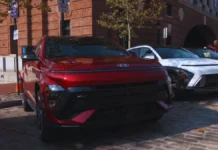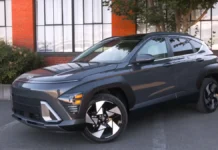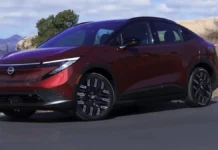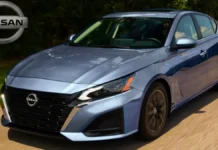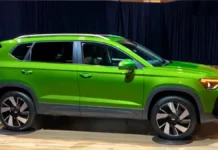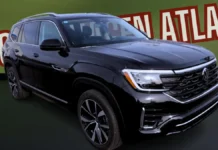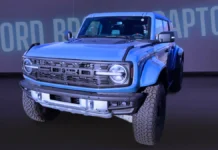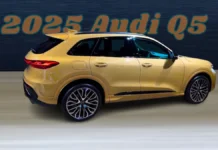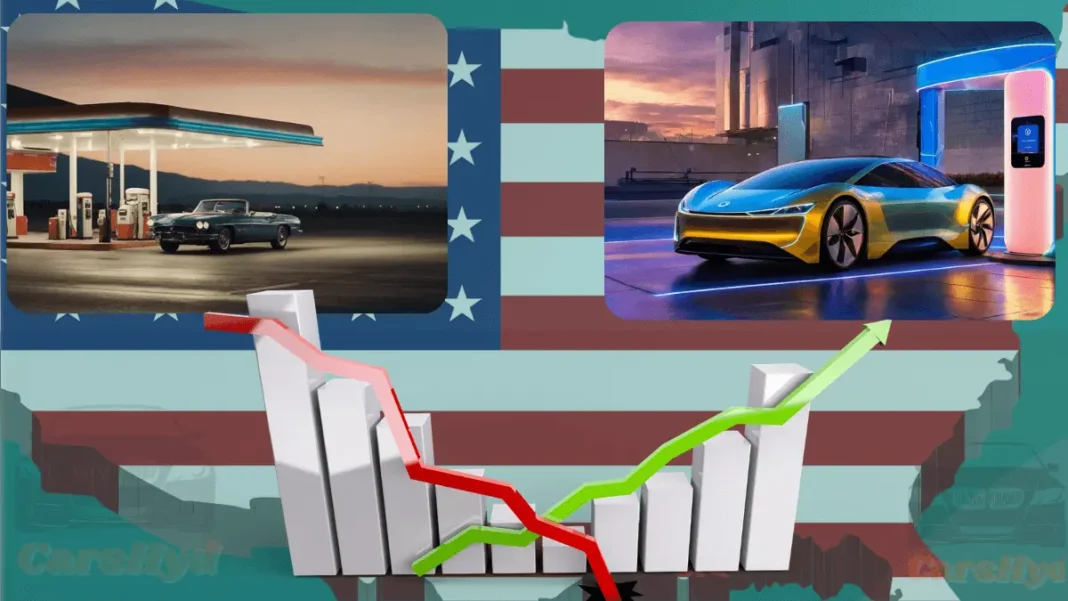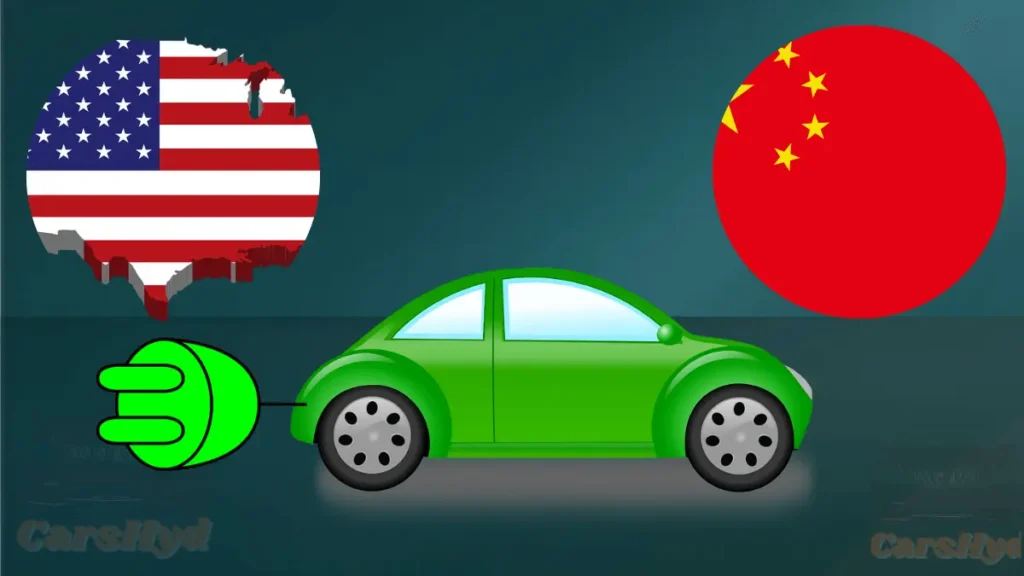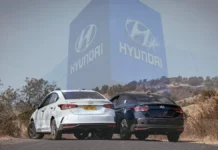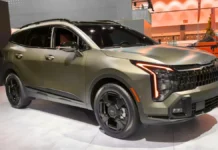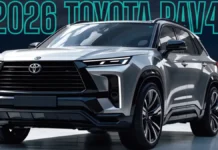In China, the electric vehicle (EV) market is surging at an extraordinary pace, transforming the landscape of the world’s largest auto industry. By 2024, EV sales had skyrocketed by more than 40%, with traditional gasoline car sales taking a sharp decline. The numbers are astounding—electric vehicles accounted for nearly 50% of all new car sales in the country. This monumental shift signals a definitive move away from internal combustion engine (ICE) vehicles, driven by government policies, robust infrastructure, and shifting consumer preferences.
But how does the United States compare? While EV adoption is increasing steadily in the U.S., the pace and scale are far from matching China’s sweeping transformation. Numerous challenges, from policy inconsistencies to infrastructure gaps and consumer habits, have created a unique landscape where gas-powered vehicles continue to dominate. Could the U.S. ever mirror China’s EV success story? The answer is complex and lies in understanding the underlying factors that set these markets apart.
China and the U.S.: A Tale of Two Markets
China’s automotive market in 2024 showcased a remarkable shift. Out of the 31.4 million vehicles sold, a substantial portion consisted of EVs, reflecting the government’s strong push for new energy vehicles (NEVs) like battery-electric cars, plug-in hybrids, and hydrogen fuel cell vehicles. This shift was supported by a staggering 17% decline in gasoline-powered vehicle sales.
In contrast, the U.S. market tells a different story. According to data from the National Automobile Dealers Association (NADA), EVs represented just 7.6% of new car sales in the first half of 2024, up from 5.6% in 2023. Gasoline cars still account for over 85% of all car sales, highlighting a stark disparity between the two nations.
- EV Sales in the U.S. (National Automobile Dealers Association) – Provides updated statistics and trends about EV sales in the U.S.
- EV Growth in China (China Association of Automobile Manufacturers) – Information on China’s car industry, including EV sales and production.
What drives this difference? Three critical factors stand out: policy, infrastructure, and consumer behavior.
Policy Differences: Driving EV Growth or Hindering It?
China’s rapid transition to EVs is deeply rooted in its government’s proactive policies. Generous subsidies for EV buyers, stringent emissions regulations, and mandatory production quotas for automakers have made electric cars a practical and often preferred choice. Additionally, policies in major cities—such as restrictions on gasoline vehicles and preferential licensing systems for EVs—have further accelerated adoption.
In the U.S., however, federal and state policies are fragmented. Programs like the federal EV tax credit have incentivized some buyers, but these measures lack the nationwide consistency seen in China. States like California have ambitious zero-emission vehicle goals, but other regions remain reliant on traditional energy sources, creating a patchwork of regulations and incentives.
The 2022 Inflation Reduction Act aimed to strengthen the U.S. EV market by encouraging domestic production and reducing reliance on imported components. While it marked a step forward, the effects of these policies have been slow to materialize, and a unified national strategy is still absent.
- U.S. Federal EV Incentives (U.S. Department of Energy) – Details on federal policies, rebates, and incentives for EVs in the U.S.
- China’s EV Policies (China’s Ministry of Industry and Information Technology) – Official information on China’s government policies promoting electric vehicles.
Infrastructure Challenges: The Missing Link in U.S. EV Adoption
A well-developed charging infrastructure has been a cornerstone of China’s EV success. By 2024, China had installed over 5.2 million public charging stations, supporting its widespread EV adoption. Conversely, the U.S. lags significantly, with just over 140,000 public chargers nationwide.
Range anxiety—a common concern among potential EV buyers—is exacerbated by the limited availability of charging stations in rural and suburban areas of the U.S. While companies like Tesla have opened their Supercharger networks to non-Tesla vehicles, addressing this gap will require years of investment and coordinated efforts between governments and private players.
Consumer Preferences: Bigger Cars, Bigger Barriers
American car buyers prioritize size, power, and utility—preferences that heavily favor SUVs and trucks. While EV models in these categories are increasing, they remain a minority. For instance, electric trucks like the Ford F-150 Lightning and Rivian R1T have gained attention, but traditional gas-powered models such as the Ford F-150 and Chevrolet Silverado still dominate sales.
Additionally, the upfront cost of EVs continues to deter many potential buyers, despite the lower operating costs over time. This financial barrier is especially significant for lower-income households, making it challenging for EVs to achieve widespread acceptance.
Can the U.S. Follow China’s Lead?
The question of whether EVs will ever surpass gasoline cars in the U.S. hinges on multiple factors. On one hand, automakers are heavily investing in electrification. Legacy manufacturers like General Motors and Ford are setting ambitious goals to transition their fleets to all-electric vehicles, while companies like Tesla continue to push technological boundaries.
On the other hand, the U.S. faces systemic barriers. Its vast geography, diverse driving habits, and inconsistent policies present unique challenges that China does not face. Long distances and limited charging infrastructure make EV ownership less practical in many regions, further complicating the transition.
What Lies Ahead for EVs in America?
While it’s clear that EV sales will grow in the U.S., an outright takeover of the market remains uncertain. Gasoline cars maintain a strong foothold due to entrenched consumer habits and infrastructure limitations. However, history has shown that technological shifts often happen faster than anticipated.
A decade ago, the dominance of Tesla or the aggressive electrification plans of legacy automakers seemed far-fetched. As technology advances, infrastructure improves, and public sentiment shifts, the U.S. may inch closer to a tipping point.
Conclusion
For now, the United States remains a nation where gasoline cars are king. However, with increasing investments in EV production, policy changes, and growing public awareness of environmental concerns, the winds of change are undeniable. Whether the U.S. can replicate China’s rapid EV adoption remains uncertain, but one thing is clear—the transition to electric mobility is inevitable, even if the timeline looks very different.
FAQs: Electric Vehicles in the U.S.
1. Will Electric Cars Replace Gas-Powered Cars in the U.S.?
The shift to electric vehicles is happening, but it will take time. Factors such as cost, infrastructure, and consumer preferences still support gasoline vehicles. However, with growing investments, government incentives, and advances in technology, the adoption of EVs is on the rise and could dominate the market in the coming decades.
2. How Long Until We Have All Electric Cars?
While a fully electric car fleet isn’t expected in the near future, experts suggest that by 2040, a significant portion of cars could be electric. Challenges such as charging infrastructure and battery technology must be addressed, but gradual advancements are making an all-electric future increasingly achievable.
3. Will Electric Cars Last Longer Than Gas Cars?
Yes! Electric vehicles typically last as long as, if not longer than, gasoline cars. Their simple design, fewer moving parts, and efficient electric motors contribute to less wear and tear. Battery life is a key consideration, but with ongoing advancements, EV batteries are expected to last for many years, and the cost of replacement is decreasing over time.
4. Why Are Electric Cars Not the Future?
While some challenges remain, such as range anxiety, high upfront costs, and limited charging infrastructure, electric vehicles are still a crucial part of the future of transportation. Technological advances are addressing many of these concerns, and the move towards sustainable energy sources will continue to drive EV adoption.


